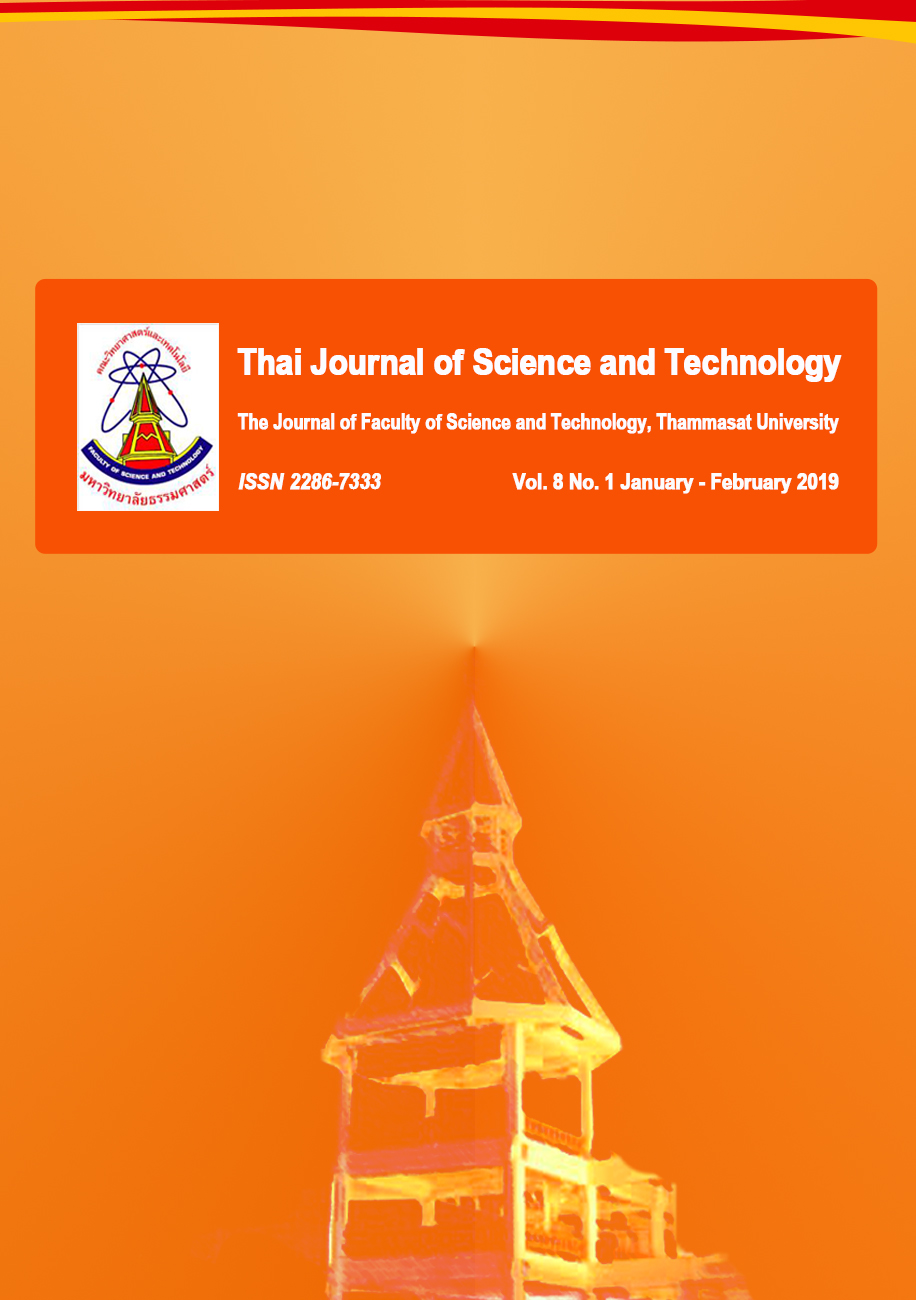การศึกษาลักษณะสัณฐานวิทยาของบัวบกสายพันธุ์ต่าง ๆ
Main Article Content
Abstract
Abstract
Sixteen local pennywort plants distributed throughout Thailand were collected and grown in experimental plots at Expert Center of Innovative Agriculture, Thailand Institute of Scientific and Technological Research (TISTR), Khlong Ha, Khlong Luang, Pathum Thani. Morphological study of the 16 Asiatic pennyworts revealed that local Thai centella could be categorized into 2 groups, small leaf and big leaf. The small leaf group represented leaf diameter of 2.5-4.5 centimeters, while the big leaf group were more than 5.0 centimeters. Small leaf pennywort has been found to distribute in Loei, Kalasin, Burirum, Chiang Rai, Chiang Mai, Nan, Nonthaburi, Nakhonpathom, Samut Prakan, and Rayong Province, while the big leaf pennywort distributed in Ubon Ratchathani, Nongbua Lamphu, Khonkean, Prachinburi, and Nakhonsri Thammarat. Moreover, it was acknowledged that pennywort plants belonged to the big leaf group that exhibited longer leaf stalk, root, stolon, and flower stalk than those in the small leaf group. Additionally, there were some more differences between pennywort collected from different cities such as leaf margin, leaf color, and leaf stalk and stolon color. Thus, pennywort was able to categorize by these appearances into other 4 groups of shallow- and deep crenate, green leaf stalk & stolon, and green-brownish purple leaf stalk and reddish-purple stolon. The collected pennywort from Ubon Ratchathani, Khonkean, Nonbua Lamphu, Burirum, Chiang Rai, Chiang Mai, Nan, Nonthaburi, and Nakhonsri Thammarat presented green leaf stalk and stolon, whilst the pennywort from Loei, Kalasin, Nakhonpathom, Prachinburi, and Rayong exhibited green-brownish purple leaf stalk and reddish-purple stolon.
Keywords: Centella asiatica; collection; morphology
Article Details
บทความที่ได้รับการตีพิมพ์เป็นลิขสิทธิ์ของคณะวิทยาศาสตร์และเทคโนโลยี มหาวิทยาลัยธรรมศาสตร์ ข้อความที่ปรากฏในแต่ละเรื่องของวารสารเล่มนี้เป็นเพียงความเห็นส่วนตัวของผู้เขียน ไม่มีความเกี่ยวข้องกับคณะวิทยาศาสตร์และเทคโนโลยี หรือคณาจารย์ท่านอื่นในมหาวิทยาลัยธรรมศาสตร์ ผู้เขียนต้องยืนยันว่าความรับผิดชอบต่อทุกข้อความที่นำเสนอไว้ในบทความของตน หากมีข้อผิดพลาดหรือความไม่ถูกต้องใด ๆ
References
มูลนิธิสุขภาพไทย, 2547, บัวบกพื้นบ้านมหัศจรรย์, มติชนสุดสัปดาห์ 24: 93.
วีณา เชิดบุญชาติ, 2543, ปลูกผักไทยได้ทั้งอาหารและยา, บริษัท อมรินทร์บุ๊คเซ็นเตอร์ จำกัด, กรุงเทพฯ.
Das, A.and Mallick, R., 1991, Correlation between genomic diversity and asiaticoside content in Centella asiatica (L.) Urban, Bot. Bull. Acad. Sinica. 32: 1-8.
Luangchonlathan, S., Kongthong, B. and Patarapanich, C., 2004, A TLC method determination of active constituents, madecassoside and asiaticoside, from Centella asiatica Linn. in various seasons in Thailand, Thai J. Pharm. Sci. 28(Suppl.):
Zainol, A., Hamid, M.K., Yusof, S. and Muse, R., 2003, Antioxidant activity and total phenolic compounds of leaf root and petiole of four accessions of Centella asiatica (L.) Urban, Food Chem. 81: 575-581.


